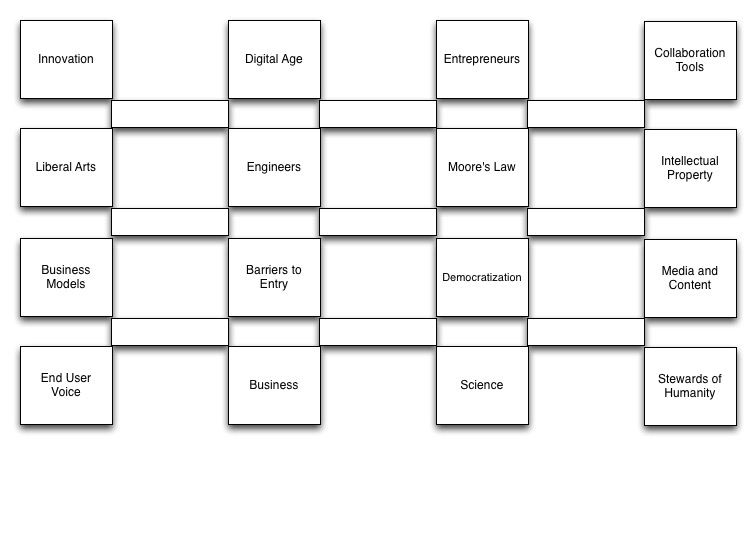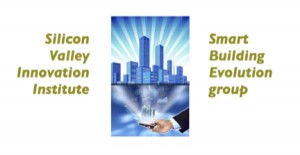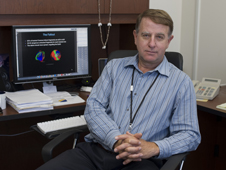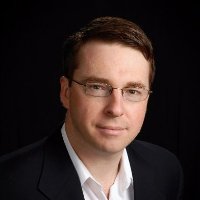Liberal artists innovate in our digital age when they combine perspectives broader than liberal arts.

Interconnected Breakthrough Innovation Dimensions
Each dimension is unbounded and takes unanticipated paths.
Innovation
Innovation = Applied Insight. If there is no insight, it is not innovation. If it is only thought about, it is also not innovation. Ideas take a fraction of a second to have. Ideas are not inventions and in and of themselves, not innovations. Insights have to be applied in the real world in order to be innovations. You have to make it actually happen, not just talk about it. But Innovation can be relativistic – meaning time, location and situation dependent. In other words if many individuals in one circumstance are aware of something but no one has yet applied it in another field it can still be innovation. Creative people cross domains and escaping their silos do this a lot.
Digital Age
Like it or not we now live in a digital age creating both danger and opportunity. Many jobs, businesses and business models are becoming obsolete. Many previously lucrative professions are in free fall. Their practitioners For example recording engineers and musicians are searching for and creating new business models. Old notions of leadership are under attack. Assumptions that the person in the front of the room knows more than everyone else present is harder to defend in light of new rates of publishing combined with ubiquitous access.Today it is impossible to know everything about a single topic. What does this mean to political, business and educational leaders? Sharing knowledge is winning out over hoarding it. More nodes in your network grants more power than more secrets. Leadership models and styles are changing right now.
Entrepreneurs
Historically, everyone was an entrepreneur. The majority of the human race, for the majority of history was self employed. They had to find and satisfy their customers because there was no one to take care of them. For a few decades in the latter half of the twentieth century people in western society had cradle to grave coverage in the form of a job that lasted for life. In today’s world of increasing physical and professional mobility and decreasing loyalty, almost all new job growth comes from entrepreneurs and intrapreneurs. Large enterprises now gain innovation through acquisition, causing creative people to have a good chance ending up self employed. For all but a few decades it is not so much a new world as a return to the old one.
Collaboration Tools
The ability to co-create having teams simultaneously work on documents and media rich projects, is coming on very quickly. Professionals in Silicon Valley now regard email and texting as inefficient, searching through email chains to find documents is very frustrating. But the plethora of collaboration tools, cloud storage locations, USB memory sticks and file formats, not to mention multiple computers and operating systems, can make it incredibly hard to find things the old way. One can not take for granted how we will be collaborating in the future – the available options are changing incredibly rapidly.
Intellectual Property
The historical origin of this very important category was the notion that an idea can be a valuable property. The ability to be granted a temporary monopoly to practice an idea is a dominant reason the United States has become the most powerful economic, military and intellectual force in the world. However the USPTO, the agency which grants these rights, is not able to keep up with the incredible task of intelligently prosecuting the flood of applications. The result is many young inventors no longer file patents. They reason as it can take up to five years to get patents issued, they will likely have either already made it, or be out of business before then. However, the filing process requires applications be published disclosing inventions before they are protected. Collaboration also confuses who owns what. This gnarly set of problems is exacerbated by low government wages failing to retain competent patent examiners on the payroll. Patents cover invention work products. Copyrights pertain to authorship work products, which all of you regularly engage in. Add in trademarks and trade secrets, and most creative people are doing some sort of IP dance. The IP concept is ideas have value which can be monetized gives rise to our digital age as an idea economy.
Moore’s Law
Simply stated: Semiconductor costs are cut in half every year. Computer power an individual can access has grown astronomically. In 1983 I had to appear before the capital committee of Bose Corporation, to get permission to upgrade the single computer shared by the entire engineering department which had 64 kilobytes. Adding a second 64 kbytes of memory cost $20,000. Today 64 Gigabytes is $20, a billion times lower cost. Applying this to cars is amusing: current automobiles can cross the United States with ten tanks of gas but imagine a car that could cross the country thousands of times on a thimble of gas. Moore’s Law is not a law of science – it is a law of intention. There are no underlying physical reasons for this law to be true. Moore’s Law signifies what humanity can do when applying a collective mind and this is why Silicon Valley is the largest economic engine in the world, why Tesla has a $30B market cap, compared to GM’s $52B. Apple yesterday was worth $623B. Apple is worth twelve times more than GM. Moore’s Law moves us from a zero sum game into an abundance model.
Democratization
In 1975, to analyze 20 milliseconds of a sound wave it used to take 20 minutes using a $2M computer. Analyzing one minute of sound would take 60,000 minutes or 1000 hours and a grant from the NSF to afford the computer. Forty years later, today, the lowest cost smart phone does it in real time. A $150 phone today is 60,000 times faster than a $2M computer was when I was in grad school and it is a few ounces in your pocket instead of hundreds of pounds in an air-conditioned 200 square-foot room. The accessibility is hundreds of trillions of times greater!
This exemplifies the democratization of technology, but what is less obvious is how this democratizes not only computing, but information access and ultimately of decision-making. Each individual can perform their own research on their own projects without needing to get permission or grants from anyone. The 6.8 billion cell phone subscribers in 2014 is up from 6 Billion in 2012, when for the first time more people had access to a cell phone than to a toilet. This incredible democratization of everything permits the entire human race to triangulate on the truth, ultimately paving the way to global democracy and making it much more difficult for oppressive regimes to persist for the first time in human history.
Media and Content
The birth of the “prosumer” and desktop publishing, two phrases coined at Apple when introducing the laser printer, refer to people who produce content for their own consumption, began a massive change away from all content and all media being created and distributed by a small, centralized minority, to literally everyone. Anyone in this room right now can learn to create a blog, a website, a newsletter, a podcast, a movie, original music and almost whatever else you imagine.
Quality does not come in an instant, but you could do any of the above at some level in an afternoon, perhaps without even spending a dollar. You may already have all of the capability in your briefcase, daypack or home on your desk. You can even do a multi-camera shoot using your phone, computer and tablet, and then fairly easily edit it to point where you could share it with others and enter into a rapid improvement iteration feedback loop. The number of forums, YouTube videos, tutorials about almost anything you could want to know is staggering, and costs range from absolutely free, to $100 dollars per month providing access to Lynda, MacProVideo, Ask Audio, and the complete software suites from Adobe andMicrosoft. For less than the cost of tuition for a single college course in a private school, one can access a large pile of apps that would have cost over $5000 a few years ago, and thousands of high quality video tutorials which you could not watch in thirty years.
Engineers
Engineers have built the infrastructure of todays world. They systematically, physically manifest what scientists postulate. Engineers need high quality inputs to produce results subordinate to humanities needs. Ambiguously communicated needs result in building the wrong things. There is a tremendous opportunity for classically educated individuals to act as translators, specifiers, articulators, communicators, arbiters and educators. Business is increasingly market driven instead of technology driven. This translates to a transfer of power away from technologists to those who can effectively communicate with them in ways that bridge technology to markets.
Liberal Arts
Classically trained individuals are valuable when able to bridge the needs of humanity and business. Specialists work for generalists. Rapidly accelerating change requires those with multiple perspectives and excellent communication skills to lead the way. Liberal artists who learn the globally unifying nomenclatures of business and technology increase their value. The ability to put oneself in another’s place with compassion, empathy, and sensitivity are more domains of the arts and sciences than engineering and business. Domain transcendence through education, experience and ability to authentically get along well with others, permit one to contribute value in any situation.
Original liberal arts education goals are extremely valuable in the long run, providing meaning in people’s lives. It is now acceptable to be a geek, to have the expertise to access information and experience. The world has been changed by geek-humanists, the technologists with soul and the business people with hearts. Learning provides opportunities to cross many boundaries.
Business Models
Business models are sets of mathematical relationships between the sets of variables which together can define a business. Business plans are models populated by numerical data substituted for the variables. Business models are equations and business plans include calculated values. Multiple business plans can be derived from each model model, in order to project profitability, valuation, and better understand the “What Ifs” one asks on the way to becoming a stakeholder. For a long car trip you could create a trip model spreadsheet reserving places to enter distance, miles per gallon, gas tank size and other costs. Filling in the numbers yields a trip plan. Many entrepreneurs unconsciously confuse and cross, model – plan boundaries. Plans are to execute. Models are tools to create plans.
Barriers to Entry
The digital age lowers the barriers to entry to begin new projects, businesses and enterprises. Without renting and furnishing an office, hiring and outfitting assistants, paying for advertising, marketing or business planning, it is possible to just start working on your idea. Writers self publish, musicians self produce, and inventors outsource manufacturing. Tens of thousands of new companies are founded annually in Silicon Valley. Thousands of new restaurants open (and close) in New York every year. It costs much less to start a software company than to outfit a restaurant. Popup restaurants use resources they do not own to begin serving. This double edged sword of low barriers to entry exposes enterprises to more competition as well. Starting has become easier, but finishing is as hard as always. The key is to get into a reality feedback loop as quickly as possible to commence iteration. Few plans survive contact with reality. Model validation is faster and less expensive than proving your plan.
End User Voice
A serious conundrum: All business needs to solve customer problems to get paid. Asking what do you want? does not yield useful results because customers are unaware of what is possible. Henry Ford said if I asked people what they wanted – they would say a faster horse. The president of DEC the world’s largest minicomputer company thought two or three people would ever need a personal computer. Neither Ford nor Jobs asked that question, they asked, would you buy this? Navigating toward the future is a tricky business, requiring much dialog between the market and the makers. It can be very difficult, expensive and time consuming to cultivate meaningful relationships with end users, contributing to countless hours of frustration we all face performing IT on our various devices. The liberal arts person can play a fantastic role being the voice of the end user, because they are now the market.
Business
Most employees of large businesses are not entrepreneurs. Entrepreneurs, with their different priorities, personalities and attention spans, can sometimes cross the business divide in both directions. Economies of scale belong to big business and agility belongs to small enterprises who determine what is next, before big business then scales it up. Big business is aware of the need to innovate or die. 88% of the companies that made the first Fortune 500 list in 1955 do not exist anymore. In 2013, 288 of the 1,000, largest American companies from 2003 remained. But to happily remain in big business, one usually must be subordinate to authority and also be politically savvy. Bureaucrats listen, but do not invent much, unlike innovators who have a hard time taking orders. Some people build up security before launching their own thing. Others who begin as self employed, become tired of constantly engaging risk. They happily enter the more sane secure ranks of larger enterprises and every level of in-between also exist as options.
Stewards of Humanity
Visiting great museums and libraries is terrific way to be reminded humanity creates fantastic results. Facing global warming, overpopulation, water shortages, nuclear accidents, and widespread atrocious behaviors can bring you down. The 24 hour hour news cycles prey upon our sense of well being, “reporting” just how bad things are everywhere all of the time. Evidence of wonderfulness, a bastion of liberal artists, can remind us why it is good to be human by preserving the best of our achievements. In a digital age, the majority of content is increasingly created and distributed online, which creates downward aesthetic pressure when originals are difficult if not impossible to discern. Have you ever looked at a web site to find what you viewed yesterday was gone forever? For those who go to Tanglewood – if you want to see a detailed description of the concert you attended two weeks, good luck finding it on the BSO Site. Open source wipes out professional editors and replaces them with lower common denominator writing. Yet having a12 megapixel camera in your phone with you all of the time beats toting around a ten pound camera bag full of lenses. It is also far more likely you will take a picture. The best camera is the one you have with you. Discrimination still requires making tradeoffs navigated by sensitive individuals who both respect old wonderful works and keep an eye out for new ones. There responsibility to be a steward of our best, defending and protecting it, is important because it can be lost, and indeed in some cases already has been.
Science
One large difference between science and most other dimensions delineated here, is the application of scientific method. Science at its best can be both wonderfully skeptical and objective. If results are not repeatable they are dismissed. For something to be true, it must be repeatedly verified by others. This system can also be abused, because bodies who pass judgement can become ossified rejecting new evidence about things they do not understand. Science as a belief system strives to be more objective than art. This is not a value judgement as we need both arts and sciences. As meaning is subjective, life would be barren without art. Life also does not work nearly as well without science. As liberal arts include sciences the responsibility for balancing between objective and subjective perspectives is a job for liberal artists. We do not have to choose between emotional relevancy and robust reliability. We have to balance the objective and subjective within ourselves as part of creating sustainable lives.
Summary
From an innovation perspective every living entity has to innovate or die. The Darwinian term is adapt. Whether we call it innovation, improvisation or adaptation, it is the same requirement. Our models are limited and our plans must change to cope with reality. We are both objective and subjective, fiscal and aesthetic, and we each lead and follow. We occupy a dimensionally vast universe. Our best hope of getting along within it, is to each dynamically adapt to reality as we perceive it. Annually innovators introduce tens of thousands of innovations to billions of people. Fortunately not everyone desires or expects to disruptively innovate as chaos would ensue. But everyone incrementally adapts and improvises daily to survive in our personal world which brushes up against all of the dimensions of the digital age partially described here.






